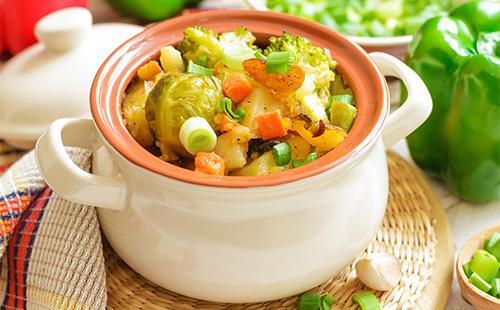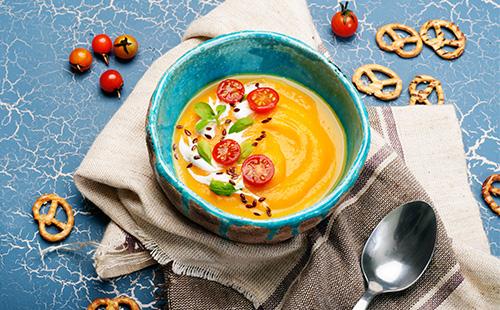The content of the article
The intestine and microbes in it exist on the principles of mutualism - these are mutually beneficial conditions under which both organisms benefit. Bacteria receive a favorable environment for reproduction, and humans receive inhibition of the growth of pathogenic microbes andB vitamins.
Separate world in the gut
Scientists estimate that the intestines contain up to 50 trillion microbes. This is significantly more than the number of cells in an adult human body. They participate in the formation of feces and account for up to 60% of the final “product”.
The species composition of bacteria is diverse, but the main 99% are only 30-40 species of microbes. The remaining percentage includes up to 400 species of microorganisms. The composition of normal flora includes:
- bacteroids;
- enterobacteria;
- enterococci;
- bifidobacteria;
- clostridia;
- eubacteria;
- streptococci;
- staphylococci;
- lactobacilli;
- mushrooms.
Microbes practically do not occur in the contents of the stomach. The acidic environment does not allow them to survive. The exception is lactobacilli, streptococci, sarcinomas. In the initial section of the small intestine, sterility is maintained. Microbes are not able to survive there due to the aggressive action of digestive enzymes. A large number of bacteria are already present in the final section.
The large intestine is the kingdom of germs. The number of microorganisms in it is much higher. The greatest seeding is observed in the rectum.
There are mechanisms that do not allow microbes to multiply excessively:
- in the stomach - hydrochloric acid;
- in the small intestine - normal motility;
- in the colon - ileocecal valve between the cecum and small intestine.
Bifidobacteria, lactobacilli and bacteroids make up the normal flora. They fill the intestinal wall, the products of their vital activity do not allow pathogenic microbes to multiply. The functions of microflora are as follows:
- synthesis of vitamins K and group B;
- participation in the synthesis of essential amino acids;
- stimulation of peristalsis;
- folic acid absorption;
- calcium metabolism;
- water-salt metabolism;
- formation of immunity;
- metabolism of bilirubin and bile acids.
Why is the balance changing ...
The condition of the intestinal flora depends on the nature of the diet. A feature of the human body is that various types of nutrients must be present in the diet in certain proportions. The excesses towards protein, fats or carbohydrates affect the condition of the flora and general health. But dysbacteriosis usually leads to several factors.
- The nature of nutrition. The predominance of a certain type of substance leads to the development of different types of flora. A large amount of protein threatens increased growth of clostridia, sweets and simple carbohydrates create an environment for candida, Escherichia coli and peptostreptococci, and a fatty diet promotes the growth of bacteroids.
- Antibiotic therapy. Antibacterial drugs act indiscriminately. Often their mechanism of action is based on damage to the cell wall, impaired growth and reproduction of microbes. For the intestinal flora, this does not pass without a trace, after antibiotics in the intestine the most resistant microbes remain.
- The pathology of the digestive tract. Stomatitis, gastritis, duodenitis, colitis, enteritis are inflammatory diseases. In the area of inflammation, blood flow is disturbed, digestion, absorption of substances are impaired, and immune defense cells are actively working. Conditions for the survival of bacteria are inappropriate.
- Acute infections. Diarrhea, which is a consequence of salmonellosis, dysentery, enterovirus, affects the state of its own flora, and pathogenic microorganisms do not allow normal development.
- Pathology of immunity. Allergic diseases and immunosuppression of a different nature are included in this concept. An allergy is not only a skin rash, this reaction is only a small manifestation of the processes that occur in the body. For the intestines, allergies are tissue swelling, a cellular reaction that upsets the balance of the flora.
- Fermentopathy. Celiac disease, lactase deficiency are associated with a violation of the digestion of certain substances, the result of the metabolism of which serves as a breeding ground for microflora.
Helminthiases, prolonged stresses, treatment with non-steroidal anti-inflammatory drugs can affect the condition of the flora. Diabetes mellitus, pregnancy can also upset the balance.
... and how is this manifested
Symptoms of changes in the composition of the flora are non-specific, they can be signs of various diseases. But the lack of effect from the treatment should lead to the idea that dysbiosis is to blame.
- Violations of the stool. This is not only frequent diarrhea, but also unformed stool several times a day, which does not fall under the definition of diarrhea. Sometimes there is an alternation of periods of liquefied stool and constipation, as well as frequent bloating.
- Allergy. It can have the nature of food intolerance, which depends on the amount of food eaten. In this case, skin reactions appear in the form of a rash and itching, diarrhea and flatulence intensify.
- Malabsorption syndrome. This is a violation of the absorption of certain substances in the intestine. It manifests itself as symptoms of hypovitaminosis of certain groups of vitamins, protein deficiency, anemia.
- General condition worsening. Weakness, susceptibility to colds, decreased performance and depressed mood are the result of the above processes.
Diet for dysbiosis: the principles of building a menu
What can I eat with dysbiosis and what kind of diet is needed? If the diagnosis has confirmed an imbalance in the microflora, it is time to switch to a therapeutic diet for dysbiosis. It must comply with the following rules.
- Balance. It is necessary to correctly combine proteins, fats and carbohydrates, their amount must comply with the physiological norm.
- Liquid. Water is needed to form feces and microbial life.With constipation, its lack will strengthen unpleasant symptoms, and with diarrhea, fluid is necessary to make up for the loss. Optimal to use 1.5-2 liters of water per day. An adult can be recommended to take a glass of clean water or mineral water without gas 30 minutes before eating.
- Mode. Any pathology of the digestive tract requires a clear distinction between meals. Nutrition for dysbiosis should occur on an hourly basis, observing the division of meals for breakfast, lunch and dinner, as well as small meals between them (lunch and afternoon snack).
The diet for acute dysbiosis depends on the nature of dyspeptic phenomena. The type of disorder is determined by the analysis and appearance of the stool. A table of products will help you navigate these indicators.
Table - The nature of dyspepsia and type of nutrition
| Type of dyspepsia | Signs | Nature of nutrition |
|---|---|---|
| Putrefactive | - Dark and fetid stool; - in the analyzes alkaline reaction, a lot of undigested fibers | - Limit fats and meat; - increase the proportion of vegetables, cereals, dairy products; - use cranberry juice, jelly, dried apricots, apricots; - drink melissa, sage, caraway seeds |
| Fermentation | - Yellow feces; - in the analyzes an acid reaction, a lot of starch and fiber | - Exclude milk; - limit carbohydrates, raw vegetables; - preference is given to protein food (it is possible dairy products); - vegetables are eaten only in boiled form; - add cloves, pepper, bay leaf to dishes (inhibit fermentation); - drink decoctions of chamomile, mint |

What will help ...
To properly compose the menu, you need to know what you can eat with dysbiosis. Depending on the prevalence of diarrhea or constipation, the list of products is different. The table will help to navigate.
Table - Products resolved for dysbiosis
| type of product | The prevalence of constipation | The prevalence of diarrhea |
|---|---|---|
| Bakery products | - Dried bread of the second grade; - unsweetened cookies | Crackers |
| Soups and broths | - Low-fat meat broths; - vegetable and meat soups | - Loose broths of meat, fish; - soups with cereals |
| Meat | - Fat-free fish in its entirety, prepared by baking, boiling; - lean meats | - Low-fat fish in the form of steam cutlets, meatballs, mousses; - diet meat |
| Vegetables | - Boiled and stewed; - rich in fiber: cabbage, beets, carrots, tomatoes, zucchini, pumpkin | Very little boiled potato |
| Fruits | - Any fresh fruit; - dried fruits | - In raw form, only rubbed apples; - dishes based on fruits rich in tannin: from pear, quince, bird cherry, dogwood |
| Dairy products | Milk and any products from it, except for sharp cheeses | Low-fat cottage cheese, other products as the process subsides |
| Sweets | Jelly and jelly | - Pastila, marmalade; - jam; - honey |
| The drinks | - Tea with milk is weak; - broth of wild rose; - vegetable and fruit juices | - Tea and coffee on the water; - herbal decoctions; - compotes from currant, bird cherry |
| Snacks & Sauces | - Salads of fresh vegetables with vegetable oil; - soaked herring; - sauces on broths, sour cream, butter | - Any snacks are prohibited; - can be sauces based on butter and low-fat broth |
... and what will harm
What can not be eaten with dysbiosis can harm with any other digestive pathology. There are only slight differences with the prevalence of diarrhea or constipation.
- Meat products. Any fatty varieties of meat and fish, regardless of the type of violation. The same group includes canned meat, sausages, smoked meats.
- Bakery products. Under the ban flour of the highest grade and pastries from it. An exception is made only for crackers.
- Fruits and vegetables. You can be guided by the principle that all fruits and vegetables allowed for diarrhea are forbidden for constipation and vice versa.
- Cereals. With diarrhea, you can’t eat millet, and with constipation - fastening cereals: semolina, rice, as well as legumes and pasta.
- Milk. In its entirety, it increases diarrhea. In sour milk form, it helps to populate the beneficial microflora.
Baby food
The diet for dysbiosis in children has some features. All harmful products must be excluded from the diet: fried, smoked, spicy, salty. A strict restriction on sweets is introduced.
Those who are breastfeeding cannot be canceled. But it can be recommended not to introduce new complementary foods during the treatment of dysbiosis.
A child’s nutrition should be more consistent with the regimen at the same meal time. The food should be warm. When compiling the menu, the age of the child and his taste preferences are taken into account.

Approximate diet
A sample menu for violation of intestinal microflora is also based on the prevalence of diarrhea or constipation. For convenience, you can use the table with an approximate set of dishes.
Table - Menu for the day for diarrhea or constipation
| Eating | The prevalence of diarrhea | The prevalence of constipation |
|---|---|---|
| Breakfast | - Protein omelet; - Black tea | - Cottage cheese casserole; - coffee with milk |
| 2 breakfast | Baked quince | Ryazhenka |
| Dinner | - Rice and vegetable soup; - chicken cutlets with buckwheat; - Black tea | - pickle; - chicken sausages with porridge; - cabbage salad; - compote |
| High tea | Kissel | Egg pate with bread |
| Dinner | - Fish souffle; - oatmeal; - rosehip broth | - Chicken and vegetable casserole; - pastille; - weak tea |
What to cook
Recipes for dysbiosis should be selected taking into account the nature of the stool. Some of them are universal and can be used for any form of pathology.
Meat pudding
Features. The dish is steamed, so it spares the mucous membrane of the digestive tract. You can use any kind of lean meat, suitable for dysbiosis with diarrhea and constipation. Serve with a small slice of butter or milk sauce.
Product Set:
- meat - 120 g;
- semolina - 10 g;
- water - half a glass;
- one egg;
- some oil.
Cooking order
- Pass the meat several times through a meat grinder or chop in a blender.
- Cook semolina from cereals and water.
- Combine minced meat and porridge, add raw yolk.
- Beat the protein in foam, carefully introduce to the meat mixture.
- Grease the form for the double boiler, put the minced meat.
- Bake steamed until cooked.

Pepper soup
Features With a tendency to diarrhea in the acute phase of the disease, you do not need to add sour cream. With constipation, there is no such restriction.
Product Set:
- broth or water - 2 l;
- red bell pepper - two to three pieces, depending on size;
- potatoes - five tubers;
- one onion;
- salt to taste.
Cooking order
- Put the broth on the fire, at this time prepare the vegetables.
- Pepper cut into cubes with seeds, peel potatoes, chop.
- Cut the onion into strips.
- Put vegetables in boiling broth, boil for five minutes.
- Add sour cream to the finished soup.
In order not to need a diet for intestinal dysbiosis, timely prevention is needed. It includes a balanced diet, antibiotic treatment only according to strict indications and doctor's recommendations, timely treatment of digestive diseases, until they become chronic.
Reviews: “Gather the will into a fist for 2-3 years”
First of all, it is necessary to take an analysis for dysbiosis in order to precisely determine which bacteria are missing in the intestines - lactobacilli or bifidobacteria. And only after that it is possible to select the appropriate drug. Unfortunately, you can’t do just one sour-milk diet, such products provide only good conditions for the reproduction of beneficial bacteria, and you need to separate them separately.
Sergey79, http://doctorsforum.ru/disbakterioz-kishechnika
I treated dysbacteriosis for several years ... At first it was all ... and pain. and a talking stomach, and a smell ... and a white coating on the tongue, and depression ... it's easier to say what wasn’t ... I took strong painkillers ... who have the same problems, I recommend the following - check for Helicobacter pylori ... If not, then start taking Somak twice a day, first 40 tablets of whom bread, neither sweet nor meat or milk, fruits and vegetables are forbidden ... Start your day with brewed drink daisies... 2-3 liters, no coffee or tea Eat boiled rice diluted with soy or drink an oatmeal drink, eat boiled beets and boiled chicken ... Gather the will into a fist for 2-3 years. The cells of the intestines and stomach change, but for several years, drink chamomile and soy more at the same time. All this helps you to dilute the quilosity in the intestine and extinguish the inflammatory process, liquid and soft foods will reduce the pancreas. Eat 6-8 times a day in small portions. you can’t smoke and be nervous ... There will be weight loss, but ... all these recommendations should help you. Happily….
Dryg http://www.woman.ru/health/woman-health/thread/4232673/
We exclude everything that feeds pathogenic flora: carbohydrates, starch, animal fats, sauces and everything that irritates the stomach. At the beginning of treatment, you can only eat: greens (up to 1 kg per day) and vegetables without starch, a list of products can list them not so much. Cucumbers, tomatoes, cabbage, dill, lettuce, broccoli, green onions, green long green beans, eggs (not more than 8 pcs. Per week) and a small piece of boiled chicken.
Alex http://www.azbukadiet.ru/2013/05/24/dieta-pri-disbakterioze-kishechnika.html/comment-page-1
Other diets
Diet for candidiasis in women
Diet after appendicitis removal
Diet models
Protein-carbohydrate alternation

